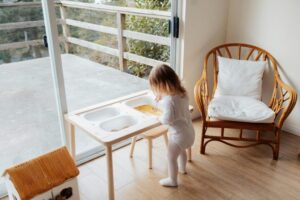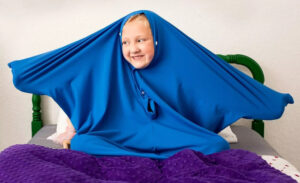Balance devices build coordination, strengthen muscles, and regulate energy. They are a key part of sensory diets for children with autism, ADHD, and sensory processing challenges.
Affiliate disclosure: This page contains Amazon affiliate links. If you buy through our links, we may earn a commission at no extra cost to you. All recommendations are selected with safety and function in mind.
Why Balance Tools Help
Balance tools engage the vestibular system (movement/balance) and proprioceptive system (body awareness). This improves coordination, confidence in movement, and overall self-regulation. For children with autism or sensory processing disorder, balance activities can:
- Improve focus before schoolwork or therapy tasks
- Reduce anxiety and restlessness through safe movement
- Strengthen core muscles and motor planning
Types of Balance Tools
Foam Balance Beams
Soft beams allow safe practice of walking and core strengthening.
View on AmazonGood for younger children or beginners. Lightweight and easy to move.
Stepping Platforms
Flat or raised platforms for step-up practice and sequencing tasks.
View on AmazonPortable and modular—can be rearranged for obstacle courses.
Stepping Stone Tracks
Staggered stones or pathways that create challenge and fun variety.
View on AmazonAdds difficulty for advanced users; promotes motor planning.
Budget-Friendly vs Advanced Options
Budget-Friendly: Foam beams and basic stepping platforms are affordable, portable, and safe for small spaces.
Advanced Options: Large stepping tracks and modular obstacle kits add challenge for older kids or therapy settings.
How to Choose: Comparison Chart
Compare balance tools side by side to find what fits your goals.
| Feature | Foam Balance Beam | Stepping Platforms | Stepping Stone Track |
|---|---|---|---|
| Best For | Beginners, younger kids | All ages, classroom use | Older kids, advanced motor planning |
| Portability | Very lightweight | Stackable, easy to carry | Larger sets, less portable |
| Price Range | $25–$50 | $30–$60 | $70–$150+ |
| Pros | Safe, soft, affordable | Versatile, scalable, durable | Challenging, fun, creative play |
| Cons | Low challenge for older kids | May slide on hard floors | Requires more space & supervision |
Safety Considerations
- Always supervise young children during balance activities.
- Use non-slip mats under beams or stones to prevent slipping.
- Start with low height tools and progress as skills improve.
- Check for weight limits on platforms and tracks.



